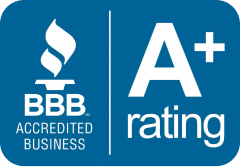
How is Medicare funded: Medicare is funded by a combination of taxes put in trust accounts, monthly premiums paid by beneficiaries, and additional funds appropriated by Congress.
Medicare expenditures totaled $796.2 billion in 2019, according to the Centers for Medicare and Medicaid Services.
The methods by which Medicare is funded are examined in this article. Changes in Medicare costs are also discussed.
We may use a few terms in this piece that can be helpful to understand when selecting the best insurance plan:
Deductible: A deductible is a set amount that a person must pay out of pocket each year before an insurer will pay for their treatments.
Coinsurance: is a percentage of a treatment’s cost that a patient must pay out of pocket. This amounts to 20% for Medicare Part B.
Copayment: This is a fixed dollar amount that an insured person pays when receiving certain treatments. For Medicare, this usually applies to prescription drugs.
Find Medicare Plans in 3 Easy Steps
We can help find the right Medicare plans for you today
Where does Medicare funding come from?

Medicare is a government healthcare program for persons over the age of 65, disabled adults, and people with an end-stage renal illness. Inpatient and outpatient therapy, as well as prescription medicines, are covered under the program.
The hospital insurance (HI) trust fund and the supplementary medical insurance (SMI) trust fund are the two trust funds that provide money to Medicare.
The Federal Insurance Contributions Act (FICA), implemented in 1935, allows the trust funds to receive money from payroll taxes. Self-employed workers are also subject to Medicare taxes, which are levied at a rate of 2.9 percent. Premiums and investment income are examples of other trust funding sources.
Hospital insurance trust fund

Employers, employees, and self-employed people all contribute to the HI trust fund, which was established in 1965. The trust fund also receives interest from its assets, as well as income taxes from some Social Security payouts and Medicare Part A premium payments.
The HI trust fund pays for inpatient hospital stays and care, including nursing care, food, and a semi-private room, that are covered by Medicare Part A. Part A also includes skilled nursing, hospice, and home health care.
The HI trust fund also covers Medicare’s administrative costs, such as tax collection and fraud prevention.
In 2019, the HI trust fund spent a total of $328.2 billion.
Supplementary medical insurance trust fund

The SMI trust fund is divided into two components, Part B and Part D, each of which is funded by premiums paid. It also receives cash appropriated by Congress, as well as interest earned on trust fund investments.
The SMI trust fund pays for Medicare Part B services, a portion of Part D, and some administrative expenditures associated with the Medicare program.
Outpatient services, like as doctor’s visits, lab testing, some cancer screenings, and preventative care, and ambulance transport, are all covered under Medicare Part B.
Prescription medications are covered under Medicare Part D. It is funded in part by the SMI trust fund and in part by premiums.
The SMI fund, like the HI fund, spends some of its money on Medicare administrative costs.
In 2019, the SMI fund spent a total of $467.9 billion.
What are Medicare costs in 2021?
Premiums, copays, and coinsurance are all part of Medicare costs, and they are all changed each year. Part A deductibles and coinsurance, as well as Part B premiums and the deductible, will all increase in 2021.
Because of the uncertainty of changes and breakthroughs in technology and science, the 2020 Medicare Trustees Report says it’s difficult to anticipate future Medicare expenses.
Each Medicare component has its own set of charges that go toward funding Medicare services.
Part A costs
The majority of consumers are eligible for premium-free Part A due to payroll taxes. A person who has worked for more than 40 calendar quarters, for example, is eligible for premium-free Part A.
If you worked 30–39 quarters, you can enroll in Part A, but you will have to pay a premium. The premium in 2021 is $259, which is $7 more than in 2020.
Part A is also available to anyone who worked less than 30 quarters, albeit the cost in 2021 will be $471, up $13 from 2020.
Before Medicare will cover services, a person participating in Part A will have to pay an inpatient deductible. The deductible was recently raised from $1,408 in 2020 to $1,484 in 2021.
The first 60 days of an inpatient hospital stay are covered by the deductible. If a person needs to be an inpatient for more than 60 days in 2021, they will pay $371 per day from day 61 to day 90, and then $742 per day from day 91 onwards, known as lifetime reserve days.
Part B costs
The monthly fee is included in the Medicare Part B cost for 2021. The basic premium for the majority of people will be $148.50 in 2021, up 2.7 percent from $144.60 in 2020.
The monthly premium rises in tandem with a person’s earnings. A person who earns more than $88,000 per year will have to pay a higher monthly premium. Premiums rise with each income bracket, reaching a monthly maximum of $504.90 for an annual income of at least $500,000.
In 2021, the deductible was raised in addition to the premium rise. In 2021, the Part B deductible will be $203, an increase of $5 over 2020.
Part C costs
Part C is a Medicare Advantage plan that provides a supplement to traditional Medicare. Advantage plans provide coverage similar to Medicare Parts A and B, as well as other services such as dental care.
The expenses of Part C in 2021 vary substantially. Medicare Advantage plans are offered by private insurance firms, and the rates vary depending on the provider, region, and plant characteristics, such as any supplementary coverage.
A monthly premium, copays, and deductibles are all possible costs related to Part C.
Part D costs
Prescription medications are covered under Medicare Part D.
The cost of Medicare Part D in 2021 varies depending on the plan. The amount a person pays for their Part D coverage is also determined by their income.
An individual earning moreover $88,000 per year, for example, will pay an additional monthly cost in addition to their Part D premium. The monthly cost for 2021 is modified and ranges from $12.30 to $77.10. An individual earning $500,000 or more is eligible for the higher adjustment.
Medigap
Medigap is a type of optional supplemental health insurance that covers deductibles and copays that aren’t covered by Original Medicare.
Private companies provide the insurance. If an individual has both original Medicare and a Medigap policy, the health expenditures are split between the two plans.
A Medigap policyholder will pay a premium in addition to the Medicare Part B premium. Medigap coverage costs vary depending on the provider, the person’s needs, and their region.
Which ED medication is best for you?
Lemonaid has a staff of registered medical specialists who can prescribe ED medicine, both brand name and generic. Get a 50% discount on your first order, as well as fast, free, and discreet delivery straight to your door.
Summary
The United States Treasury manages two trust funds that fund Medicare. Premiums, payroll and self-employment taxes, trust fund interest, and government-authorized funds are all sources of funding.
Find Medicare Plans in 3 Easy Steps
We can help find the right Medicare plans for you today
FAQs
Where does the money come from to pay for Medicare?
Medicare is primarily funded through general revenues (43%), payroll taxes (36%), and beneficiary premiums (15%). (Figure 7). Part A is primarily funded by a 2.9 percent tax on wages paid by both companies and employees (1.45 percent each) (accounting for 88 percent of Part A revenue).
Is Medicare funded by taxpayers?
Medicare is funded by payroll taxes and premiums paid by beneficiaries. The federal government and each state split the cost of Medicaid. As part of the fiscal relief plan in response to the 2020 economic crisis, both programs received additional financing.
Is Medicare fully funded?
The Social Security Administration pays for Medicare. That is to say, it is supported by taxpayers: We all contribute 1.45% of our earnings to FICA (Federal Insurance Contributions Act, if you’re into acronyms), which goes to Medicare. Employers contribute a further 1.45%, bringing the total to 2.9 percent.
Is Medicare paid through Social Security?
Yes. In reality, the Social Security Administration will remove the fee from your monthly income if you are enrolled in both Social Security and Medicare Part B – the section of Medicare that offers regular health insurance.
How is Medicare funded in Canada?
Canadian Medicare is a decentralized, universal, publicly funded health care system in Canada. The country’s 13 provinces and territories are principally responsible for funding and administering health care. Each has its own insurance plan and receives per-capita cash assistance from the federal government.
How is healthcare funded in the US?
In the United States, there are three main funding sources for health care: the government, private health insurers, and individuals. The federal government covers over half of all medical expenses through Medicaid, Medicare, and other healthcare programs it administers.
How Long Will Medicare be funded?
The Part A trust fund, which subsidizes hospital and other inpatient treatment, is expected to run out of money in 2026, according to a report released by Medicare’s trustees in April 2020.
What is general fund in Medicare?
The Medicare trust fund funds health services for Medicare beneficiaries, a government insurance program for the elderly, disabled, and others with certain medical conditions that Congress has defined as qualified. Payroll taxes, general tax revenue, and premiums paid by enrollees all go into the trust fund.
How is Medicare Part C funded?
What is the source of funding for Medicare Part C? Part C of Medicare, often known as Medicare Advantage, is a private option to regular Medicare. The premiums that subscribers pay for Medicare Advantage health care programs finance Part C independently from the rest of Medicare.
Does Medicare go broke?
Medicare is not on the verge of becoming bankrupt. It will be able to pay for medical care. Instead, it is expected to go bankrupt. Insolvency indicates that Medicare may not have enough money to cover all of its costs.








